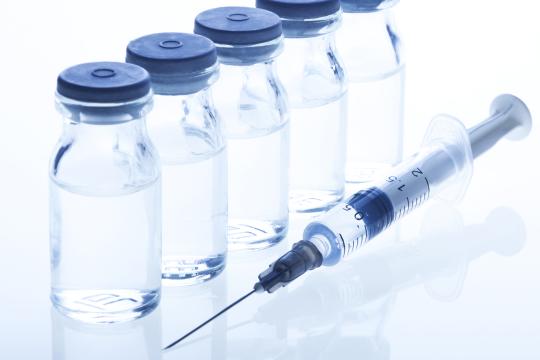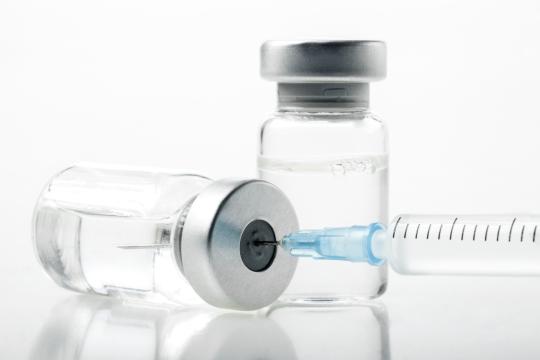
They say, forewarned is forearmed. And while we have no idea who “they” are, we do know a thing or two about “forewarning" and “forearming”—and we’re in a sharing mood. So today we’re going to deep dive into the dangers of liquid silicone injections—Why you must avoid them, what the FDA and board-certified plastic surgeons say, and how you can avoid them. Here we go.
How did we get here?
In the last five+ years there’s been a big uptick in the number of injectable procedures performed in the U.S. Recent statistics from The American Society of Aesthetic Plastic Surgery cites a 39% increase in 2018 alone. Gone are the days of skulking out the back door of your plastic surgeon’s office incognito. We now live in a world of pop stars publicly announcing their butt augmentations and reality TV moguls unabashedly admitting to Botox and fillers It seems everyone is embracing this new-found nonsurgical enhancement. So what could go wrong?
This: The uptick in the popularity of injectables—by patients from their early 20’s to late 80’s and beyond—may be leading some uninformed consumers to the assumption that all fillers are created equal and… well… who the heck cares who’s injecting me if the results are there? We care, in fact. And injectable filler’s are not the easy-peasy, risk-free venture some are led to believe.
Not only do injectable fillers come with their own set of risks and side-effects, those risks are doubled (tripled, quadrupled) when a patient fails to ensure that their injector is indeed who they say that are—a licensed, qualified medical professional with experience performing injectable procedures, in a suitable medical environment, who can verify exactly what product is being injected.
There are no statistics citing the number of patients who undergo back alley liquid silicone injections each year, but before you accuse us of “crying wolf,” there’s plenty of evidence that it’s happening. Don’t take our word for it. Take a moment and Google “bad silicone injections,” “silicone breast injections” and “silicone butt injections,” then come back to us. We’ll wait.
*crickets
Now that you’re feeling as numb as we are, let’s proceed as we double-down on the horror, because as terrifying as those pix are, they don’t even come close to displaying all the dangers involved with allowing a non-professional to inject you with silicone (or cooking oil, or cement, or “Fix-A-Flat” tire glue… all real scenarios and all extremely dangerous and many times fatal.)
So why is silicone so dangerous?
Where do we start. In and of itself, silicone isn’t dangerous—it can be molded into old-timey ice-cube trays and cat-shaped phone covers #essentials—but injecting it into your body isn’t nearly as whimsical.
First of all, before you lump the silicone breast and butt implants that surgeons might use in a body augmentation procedure in with these liquid silicone injections, you should know that not all liquid silicone is the same. Many of the illegal silicone injections that happen today involve industrial-grade silicone, but that doesn’t mean that you should go ahead with injecting even medical-grade silicone. While silicone breast and butt implants are comprised of medical-grade silicone that’s tested for biocompatibility, that silicone is encased in a protective shell the keeps the contents from spreading throughout your body. Without that protective shield, the silicone would do just that, and therein lies the problem.
Your body is a complex network of organs and vessels all chatting and working with one another. This camaraderie offers an injected liquid silicone a vast highway with which to spread its poison. These injections can also block said blood vessels, causing innumerable problems and suffering, like, you know, blindness and skin death. Best case scenario? The injected silicone results in painful, hard, gravel-like substances that take up residence under your skin and stay like that… permanently. Worst case scenario? The injected silicone spreads to your lungs, heart and brain causing a stroke and even death. There are a myriad of scenarios in between, and none of them are all that conducive to… living. We’re going to assume you’d like to keep doing that.
And let’s just consider, on the off chance, that you don’t experience any immediate side effects from back alley silicone injections? Sadly, liquid silicone injections are the gift that keeps on giving, the effects are long-term and insidious, and the treatment of which will require scooping the silicone out of the body wherever it’s happened to spread, removing dead tissue and treating infection—which sounds all kinds of unpleasant.
Not only does the FDA warn about the dangers of silicone injections, but ASAPS also specifically states that “silicone injections are an unsafe and unacceptable option to use as a filler.” They go on to advise that these types of injections are often offered by unlicensed individuals and certainly not offered by their own members. And then they say, run. Run, far away.
Now let’s talk about these back alley injectors, shall we?
Where there’s supply, there’s demand, and sadly there are a vast number of shady practitioners who might pose as licensed medical professionals when, in fact, they’re completely void of any anatomical knowledge, eduction and or injectable experience or qualifications. They’re likely not even performing these procedures in a medical office—and that’s a big ol’ red flag. The FDA actively investigates and prosecutes illegal injectors, ‘cause you know, it’s a crime—and that’s another big ol’ red flag.
Why would anyone do this?
You’d be surprised. Vanity can make one do silly and dangerous things. There's the double-edged sword that liquid silicone injections produce a permanent result. But is that a good thing? Particularly if the result is dangerous and poorly executed? And then there's the allure of saving a buck—and trust that the price difference between a dangerous back alley procedure performed by a faux-doctor and an in-office procedure performed by a licensed professional can be vast. Yet, if one really considers the ramifications of these decisions, they'll realize that no amount of savings is worth a life or really any of the unpleasantness we’ve talked about today.
The only way to assess with certainty that an injectable procedure is safe and appropriate for you is to sit down with a board-certified plastic surgeon in your area. And absolutely, positively, no-ifs-ands-or-buts about it, never, ever let anyone inject you with silicone. Never ever. Seriously. #rantover





